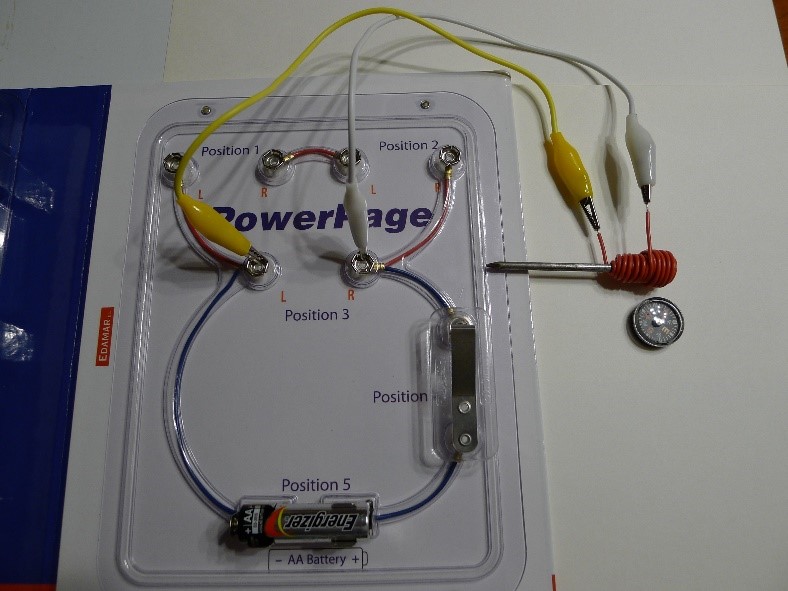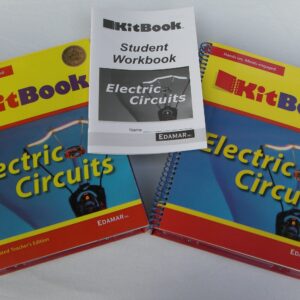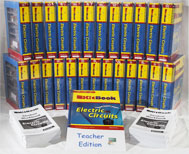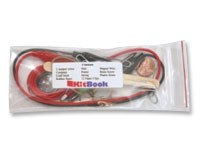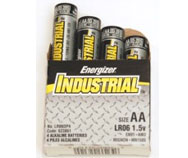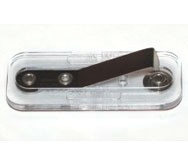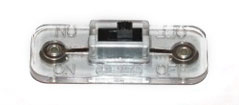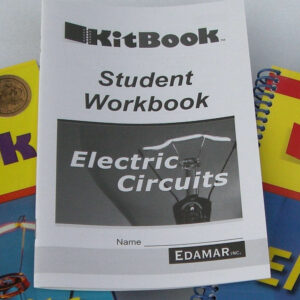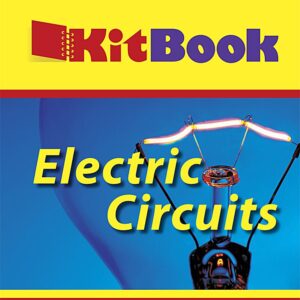It’s common knowledge that a permanent magnet has both a north and south pole. But does an electromagnet also have magnetic poles?
First, a quick review on electromagnets. When electrical current flows through a wire, a weak magnetic field develops around the wire. By winding many turns of wire around a metal core you can make this weak field very strong, even strong enough to lift a junk car.
An electromagnet does have north and south poles, and it’s simple to demonstrate this with the Electric Circuits KitBook.
KitBook activity No. 9 provides instructions for building a simple electromagnet using a nail and a wire. After building an electromagnet place the KitBook’s compass near one end of the electromagnet and close the switch. Either the north or south end of the compass will point toward the electromagnet. Since opposite magnetic fields attract, if the north end of the compass points toward the electromagnet, this is the electromagnet’s south pole. By slowly moving the compass around the electromagnet, you can see the orientation of the entire magnetic field surrounding the coil of wire.
An interesting feature of an electromagnet is that, unlike a permanent magnet, its magnetic field can be reversed. This is based on a principle of physics known as the “Right Hand Rule.” Simply stated, it says if you grab a wire with your right hand and point your thumb in the direction of current flow, your coiled fingers will indicate the direction of the magnetic field lines. Since current flow direction determines the magnetic field’s orientation, reversing current flow will also reverse the magnetic field and thus the north/south poles.
The “Right Hand Rule”
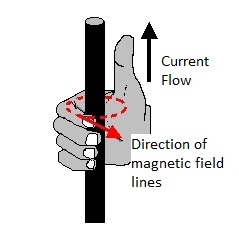
The “Right Hand Rule” can be easily demonstrated in the KitBook as shown below. Again, make an electromagnet as explained in Activity No. 9. Place the compass about one-fourth inch away from the coil and press the push button. Notice and record which end of the magnet points toward the electromagnet. Now reverse the battery in its holder and repeat the experiment. The opposite end of the compass will point to the coil since the current flow, and thus the magnetic field, have been reversed.
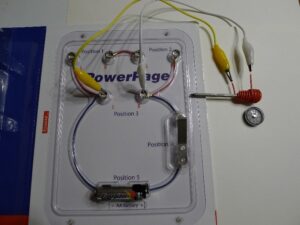
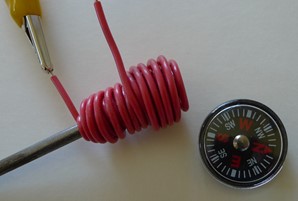
With the battery’s “+” terminal pointing to the left, current flows in a counterclockwise direction creating a north pole electromagnet.
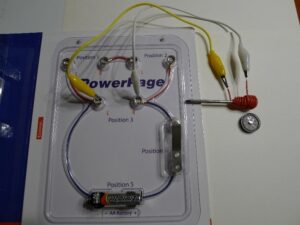
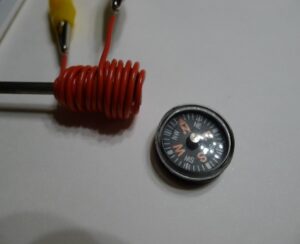
With the battery’s “+” terminal pointing to the right current flows in a clockwise direction creating a south pole electromagnet.
This principle has many practical uses. Using current flow direction to determine the direction a DC motor turns is one application. The KitBook’s motor and color wheel can demonstrate this. Build a series circuit with the battery, motor and slide switch. Place the color wheel on the motor shaft and place the switch in the “on” position. Notice which way the motor turns. Without turning off the switch, remove the battery from its holder and reverse it. Notice what happens to the motor. The motor will stop, then reverse its direction of travel.
This same principle is used to raise and lower power windows in a car. When current flows through the window’s motor in one direction the window goes down, and when the current is reversed, the window goes up.
You have just learned several important facts about electromagnets. You can turn the magnetism off and on with a switch. You can make the magnetic field stronger by adding more coils. You can change the electromagnet’s poles by changing the direction the current flows. And finally, the direction a DC motor rotates can be controlled by the direction current flows through the motor’s electromagnets.

